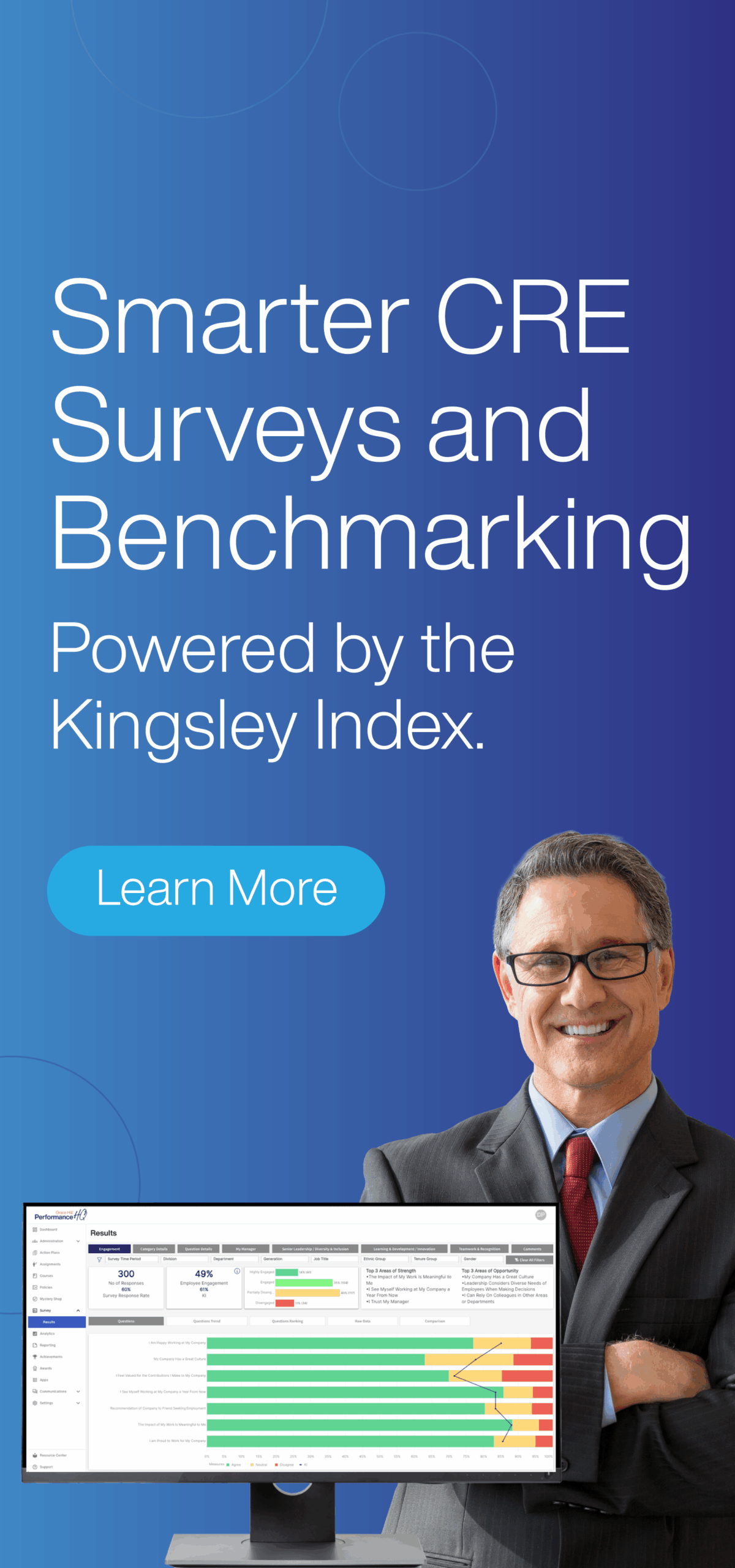Exploring the crucial connection between provider performance and tenant satisfaction.
Commercial real estate (CRE) organizations often struggle to understand the performance of the providers that support their properties and how that performance impacts overall tenant satisfaction levels across the portfolio. In a recent survey, 83% of tenants said their experience with the service providers in their building is a significant factor in deciding whether to renew or not.
For that reason, Commercial Real Estate organizations must find ways to track their service providers’ performance across the portfolio and correlate the impact on tenant satisfaction. Failing to do so can have a devastating effect on the long-term success of a portfolio.
But with the right tools and strategies, CRE companies can gather essential insights to make informed decisions that support increased tenant satisfaction and renewals.
Understanding The Connection
In the commercial real estate industry, service providers play a vital role in ensuring your properties run smoothly, operate effectively, and look their best. They provide a variety of services, including property management, maintenance, cleaning, security, and landscaping.
By understanding the performance of your service providers and their impact on your satisfaction scores, you can identify areas where improvement is needed and make changes to contracts — or find new providers — if necessary.
The Benefits of Tracking Provider Performance
Tenant satisfaction directly impacts occupancy rates, including longer lease terms and positive word-of-mouth marketing. In fact, MIT and Maastricht University researchers found that tenants who rate overall satisfaction one point higher can increase renewal rates by as much as 8.5%.
Tracking the performance of your service providers helps you identify areas where tenants are not satisfied and make changes to improve the situation. Leveraging unbiased data to understand provider performance can also help to avoid costly problems down the road. For example, if a maintenance provider is not responding to tenant requests in a timely manner, this could lead to property damage or tenant dissatisfaction.
By identifying the problem early, CRE companies can take steps to prevent it from becoming a costly problem.
Challenges of Tracking Provider Performance Across All Properties In Your Portfolio
Often, one of the greatest tracking challenges for CRE organizations lies in the diversity of their portfolios. While some properties may conduct satisfaction surveys, others might not. And among those conducting surveys, the tools used to capture data are disparate.
The result for CRE organizations: inconsistency and unreliable results that offer no valid measure of comparison for property, asset class, managers, regions, etc.
As Thomas Stanchak, Director of Sustainability for Stoneweg US, explains, “The value of our investments is a function of the individual leases with each of the residents that call our communities home, [but prior to using KingsleySurveys], we lacked insight into nearly 70% of our locations for one reason or another.”
Like Stoneweg US, many CRE organizations realize they lack a comprehensive tool for goal setting, accountability, and analyzing trends, as well as an industry benchmark to measure performance.
And as Thomas adds, “If you lack a benchmark, your KPIs are unilateral, which diminishes the ability to create accountability for the outcomes.”
How Tenant Surveys Help
Tenant surveys can be a valuable tool to uncover the correlation between your tenants’ satisfaction and your service providers’ performance. By regularly surveying tenants about their satisfaction with the services they receive, CRE companies can gather unbiased data, identify areas where tenants are dissatisfied, and then make changes to improve the situation.
Additionally, it can uncover commonalities across your portfolio and highlight the providers that positively (or negatively) impact your property performance.
Surveys are not created equal. Anyone can create a survey and broadcast it to defined lists. However, only those that are well-designed will give companies the data they need for impactful decision-making.
Therefore, when implementing a survey program, there’s both an art and a science to survey delivery and design, and additional considerations are needed to understand your providers’ performance and its impact on tenant satisfaction and Net Promoter Scores (NPS).
4 Tips for Developing Surveys That Deliver Results
- Consistency is key: A disorganized survey process with inconsistent questions, survey methods, or delivery means that any insights lack a valid measurement of comparison. Capturing unbiased, consistent data across properties allows CRE professionals to evaluate the portfolio’s true performance properly.
- Response rates matter: Capturing data from a broad range of tenants — not just your raving fans — is important. Feedback from a diverse group of tenants will offer a more accurate picture of your tenants’ experience and allow your organizations to understand better where to improve.
- Use the data to drive investments: The ability to correlate data across questions and understand the root cause of your survey ratings will allow you to make targeted property investments where needed. Whether investing in amenities, ESG efforts, property improvements, or provider services, unbiased data provides data you can depend on to drive improvements.
- Survey regularly. Don’t conduct a tenant survey just once. It’s important to stay connected to your tenants’ experience to properly understand their needs. Plus, by annually surveying your tenants, you can track changes in tenant satisfaction over time.
By following these tips, you can use tenant surveys to uncover the correlation between tenant satisfaction and service provider performance and make your properties more attractive to tenants.
Need help measuring your provider performance? Talk to our experts about how our industry-specifics surveys and benchmarks can help your CRE organization.


 Customer Support
Customer Support




